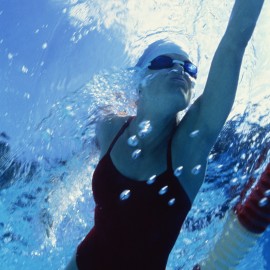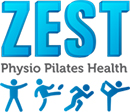At ZEST Physio Pilates Health we are experienced in managing shoulder injuries. Throwing athletes, swimmers and gym junkies are likely to experience shoulder pain at some stage throughout their sporting career. This can be from an acute injury or from the cumulative effects of overuse, heavy lifting, poor technique or bad postural habits. Your shoulder is located where your upper arm bone (humerus) joins onto your body.
The ”glenohumeral joint” is your main shoulder joint, where the humerus connects to your shoulder blade (scapula). This joint is described as a ”ball and socket joint” where the top of your humerus is the ball, and the scapula forms the socket. This form of joint is fantastic at giving your shoulder lots of range of motion for activities in daily life. Unfortuntalely it also predisposes the shoulder to various types of injury. The following section will describe some of the many types of shoulder injuries that our Physiotherapists see in clinic.
The ‘rotator cuff’ form a group of very important muscles which stabilise the shoulder joint. These muscles can be prone to injury and unfortunatly can lead to poor mechanics around the shoulder if not working well. Retraining these muscles in addition to those which control your shoulder blade motion are a vital component to rehabilitating your shoulder injury. The muscles you may have heard of which make up the rotator cuff include: Supraspinatus, Subscapularis, Infraspinatus and Terres Minor. Tears and tendinopathies can occur in this region and require a specific diagnosis and managment plan. Shoulder dislocations and subluxations are another group of injuries that Physiotherapists have experience in managing. Some shoulders are more prone to these types of injury due to excessive stretch and mobility in connective tissuse. An acute dislocation occurs when the humerus pops out of the socket, most commonly seen in contact sports such as football or rugby. If severe, surgical stabilisation may be required.
Our Physiotherapists work closely with surgeons and will guide you every step of the way through your post-operative rehabilitation. We can also guide you towards the best imaging, doctors and surgeons for you. Subluxations are less likely to require surgery but will most likely require specfic rehabilitation exercises aimed at restoring stability and strength to the joint. In addition to rehabilitation exercises and strength training, our Physiotherapists may also teach you ways to tape your shoulder for sport to prevent your injury occuring again. Other conditions our Physiotherapists see commonly in the shoulder include acromioclavicular joint (ACJ) injuries, labral tears, bursitis, tendinopathies, biceps tendon injury and osteoarthritis. All of these conditions tend to respond well to Physiotherapy. The exact treatment pathway will be determined in your initial assessment.

Shoulder Assessment
Your Physiotherapist will conduct a thorough assessment of your shoulder injury in your initial appointment. It is likely they will need to assess your movements and strength of your shoulder. A number of specific clinical tests are used to assess the integrity of structures such as labrum, rotator cuff muscles, ligaments and tendons. This enables the Physiotherapist to give you an accurate diagnosis of your condition and devise the best treatment plan for you.
Shoulder Treatment
Based upon your diagnosis which is established in your Physiotherapy assessment, you will be guided towards the best shoulder injury treatment options. This may include a variety of manual techniques such as: muscle or fascial release, joint mobilisation and dry needling to name a few. Sometimes your neck and thoracic spine may also be reviewed. Taping options can be explored to offer your some temporary support or stability while your muscles are getting stronger to prevent further injury occuring. Occasionally referral for imaging such as MRI or x-ray may be required to obtain more information about your injury.
Shoulder Rehabilitation
Rehabilitation of the shoulder joint is a complex and individualised process. Your Physiotherapist will guide you towards the right exercises. The exercises will likely be aimed at some or all of the following pending your condition: improving the way the bones and joints move (biomechanics), improving rotator cuff strength, improving your scapula stability and/or improving the way the nerves and muscles work together. Whilst shoulder rehabilitation may start with home exercises, it will eventually be incorporated into your sport or usual gym/exercise program so that your injury does not return.
Did you know?
Physio Exercise and Pilates is often used for managing neck and shoulder injuries/conditions. Check out our Physio Exercise Class page for more information.
Swimmers are prone to developing shoudler injuries from overuse

Recommended Practitioners
All of our Physiotherapists are experienced in managing all injuries. The Practitioners with a special interest in shoulder injuries include:

